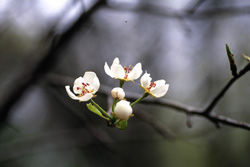
| date | visits of interest | accommodation |
|---|---|---|
| Day 1 | Tokyo | Tokyo / hotel |
| Day 2 | Sensoji Temple, Ueno Food Market | Tokyo / hotel |
| Day 3 | Okayama Castle, Korakuen Garden | Okayama / hotel |
| Day 4 | Hiroshima Peace Park | Hiroshima / hotel |
| Day 5 | Miyajima, Itsukushima Shrine | Hiroshima / hotel |
| Day 6 | Dogo Onsen | Matsuyama / onsen ryokan |
| Day 7 | Matsuyama Castle | Matsuyama / onsen ryokan |
| Day 8 | Ritsurin Park, Inland Sea | ,Kojima/ hotel |
| Day 9 | Nishiki Food Market, Gion Geisha Quarters | Kyoto / hotel |
| Day 10 | Golden Pavilion, Ryoanji Temple | Kyoto /hotel |
| Day 11 | Nara (Todaiji Temple, Great Buddha, Kofukuji Temple, Deer Prk). | Kyoto / hotel |
| Day 12 | Tour ends |
Maximum number of participants : 6 clients.
Minimum number of participants : 2 clients.
Price : USD 4750 per person
What is included : all domestic transport, full guide service, all accommodations, all 11 breakfasts, 3 dinners, baggage forwarding, airport pickup.
What is not included : lunch, drinks during meals, international flights, personal use of taxi
, airport transfer at the end of the tour (the trip ends at the hotel in Kyoto).
Day by Day Tour Itinerary
Day 1
Arrival in Tokyo.
Day 2
Half day city tour of Tokyo, which includes Sensoji Temple, located in the downtown area with a marvelous laneway called Nakamise, lined with a hundred shops selling all kinds of traditional Japanese items.
We also explore one of the most trendy districts in Tokyo called Omotesando. There is a shrine revered by Many Japanese, Meiji Jingu, which is dedicated to Emperor Meiji, who was credited with bringing this country into the forefront of the world powers in the latter half of the 19th century.
Day 3
In the morning we get on board a bullet train bound for Okayama.
The journey is a little over three hours. If we are in luck, we can take a glimplse of Mt. Fuji from the Pacific coast.
After arriving in Okayama, we start a sight-seeing tour of Okayama castle, which was originally built in the early 1600s, and Korakuen
Garden, which is one of the three most refined, sophisticated Japanese gardens.
Day 4
Today we head on west on a bullet train to Hiroshima. The town was devastated by the A-bomb explosion in August 1945. At the epicenter of the blast stands the A-bomb Dome, which has been preserved intact with only the skeltons of the building. Next to the Dome is the Peace Park to pay tribute to the victims. The Atomic Bomb museum sits in the precincts of the park. All the materials including the photos, remnants of the blast, etc, are quite sobering.
Day 5
The Miyajima island has been considered sacred by the Japanese and the Itsukushima Shirine has been the center of worship. The famous Torii Gate painted in vermilion color, which appears rising out of water, when seen from a distance, looks even divine and sacrosanct.
Just browsing around the small main thoroughfare of the island is quite exhilarating. They sell oysters grilled over the charcoalon the roadside stalls. Momiji Manju or dumplings stuffed with red beans shaped like a maple (momiji) leaf is a local specialty.
We go back to the Hiroshima mainland by a short ferry boat ride.
After arriving in Okayama, we start a sight-seeing tour of Okayama castle, which was originally built in the early 1600s, and Korakuen Garden, which is one of the three most refined, sophisticated Japanese gardens.
Just browsing around the small main thoroughfare of the island is quite exhilarating. They sell oysters grilled over the charcoalon the roadside stalls. Momiji Manju or dumplings stuffed with red beans shaped like a maple (momiji) leaf is a local specialty. We go back to the Hiroshima mainland by a short ferry boat ride.

